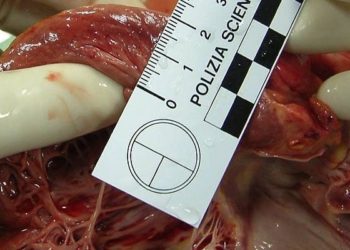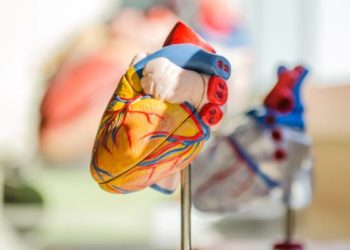Plasma progranulin levels are correlated with left ventricular function recovery following myocardial infarction
1. In this prospective cohort of patients with acute myocardial infarction (AMI), plasma progranulin levels increased acutely after the AMI.
2. The increase in plasma progranulin levels in the acute phase after the AMI was associated with an improvement in cardiac function, specifically, an increase in left ventricle ejection fraction (LVEF) during the chronic phase.
Evidence Rating Level: 1 (excellent)
Progranulin is a secreted glycoprotein, regulates inflammation and wound healing, and is associated with frontotemporal dementia, and cancer. Previous studies have reported that the administration of progranulin reduces myocardial infarct size while also improving left ventricular function in rabbit models that had an acute myocardial infarction (AMI). The goal of this study was to investigate the relationship between left ventricle (LV) function 6 months after the onset of AMI. However, the role of plasma progranulin in the acute phase has yet to be thoroughly studied. Therefore, this prospective cohort study was conducted to determine the changes in progranulin levels in the acute phase after AMI, and the correlation with LV function in the chronic phase. Patients were included if they were admitted to Gifu Municipal Hospital due to anterior chest pain, underwent a coronary angiography, and were diagnosed with AMI based on extended chest pain, ST segment elevation, and an occluded coronary artery. Blood samples were taken from the participants from the antecubital vein to measure plasma progranulin levels. The participants also underwent echocardiography to measure left ventricular ejection fraction (LVEF), LV end-systolic dimension (LVSd), and LV end-diastolic dimension (LVDd). A total of 34 patients participated in the study, with 18 in the AMI group, and 16 in the control group. On day 0, there was no significant difference in plasma progranulin levels between the control group (69.5 ± 24.6 ng/mL) and the AMI group (84.2 ± 47.1 ng/mL. However, when measured on day 7, the progranulin levels were much higher in the AMI group (104.2 ± 52.0 ng/mL) compared to the control group (69.5 ± 24.6 ng/mL) (p=0.045). In patients with acute phase AMI, plasma progranulin levels increased significantly from 84.2 ± 47.1 ng/mL to 104.2 ± 52.0 ng/mL from day 0 to 7 respectively (P=0.0002). There was a positive association between the rise in plasma progranulin levels during the acute phase and the improvement in LVEF from the acute and chronic phase. This study was limited by the small number of patients with AMI, leading to reduced generalizability, and statistical power. Overall, in this retrospective cohort study of patients with AMI, plasma progranulin levels increased after AMI in the acute phase, and this increase was positively correlated with an increase in LVEF during the chronic phase.
Click to read the study in PLOSONE
Image: PD
©2024 2 Minute Medicine, Inc. All rights reserved. No works may be reproduced without expressed written consent from 2 Minute Medicine, Inc. Inquire about licensing here. No article should be construed as medical advice and is not intended as such by the authors or by 2 Minute Medicine, Inc.







